The Roslyn Hill Climb in the 1901 Long Island Endurance Test
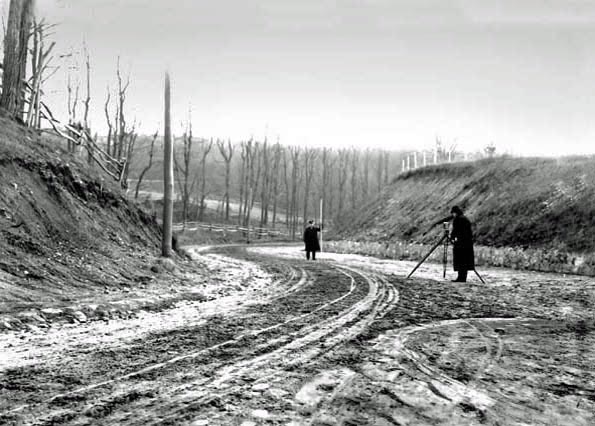
One of the first races ever held on Long Island was the '100 Mile Endurance Test' held on Long Island on April 20th, 1901.
Within the 100 mile Endurance Run were two separate 'special events' during the 100 mile course. First, was a fuel consumption test open to gasoline vehicles only giving the prize to the vehicle consuming the least amount of fuel during the 100-mile run. The second contest-within-a-contest was the more exciting Roslyn Hill climb.
Hill climbs were popular in early racing to show the power of the new machines. The most popular on Long Island was the later “Sensational” 1910 Port Jefferson Hill Climb, but Roslyn had an even longer incline that was very demanding on those early gas, steam and electric vehicles.
This post details the Roslyn Hill Climb portion of the 1901 Endurance challenge.
Greg O.
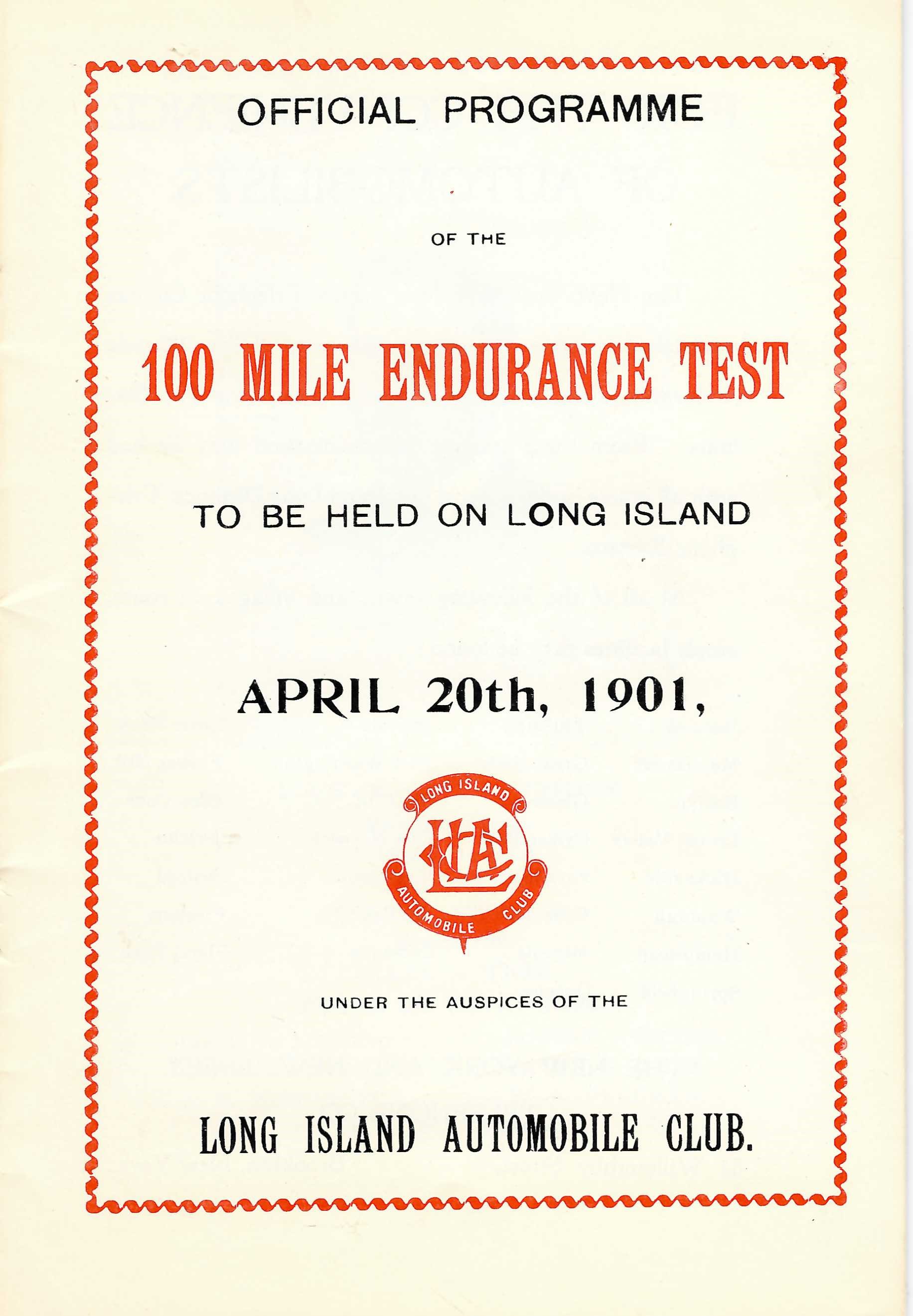
The '100-mile Endurance Test' on April 20, 1901 was an early, exciting 'race' for the purpose of demonstrating to the skeptical public that these 'new-fangled' horseless carriages could provide transportation as reliably as their horses. Or, as the New York Times printed at the time, "...to show the public just what they are good for in getting around the country conveniently and at a tolerable speed."
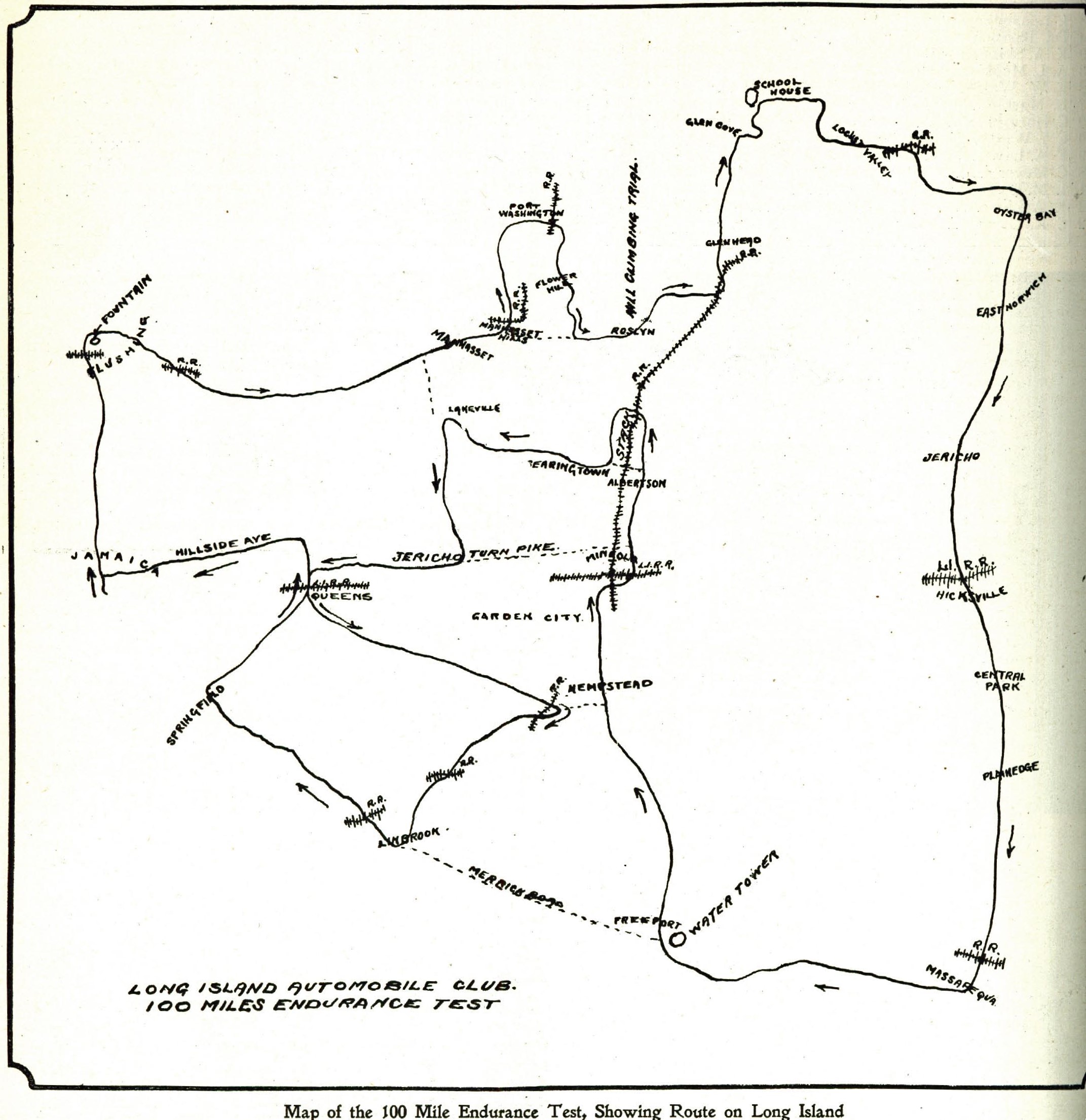
Beginning in Jamaica, Queens, heading north to Flushing, the course then carried the competing vehicles eastward on North Hempstead Turnpike (Northern Blvd) through Manhasset, up into the Port Washington peninsula, Roslyn, Glen Cove, turning south in East Norwich through Hicksville and Central Park (Bethpage) before turning west in Massapequa. In Freeport, the route went north through Hempstead and around Garden City to head south again towards Lynbrook. The course finally meandered through southwest Nassau and Queens before returning to Jamaica.
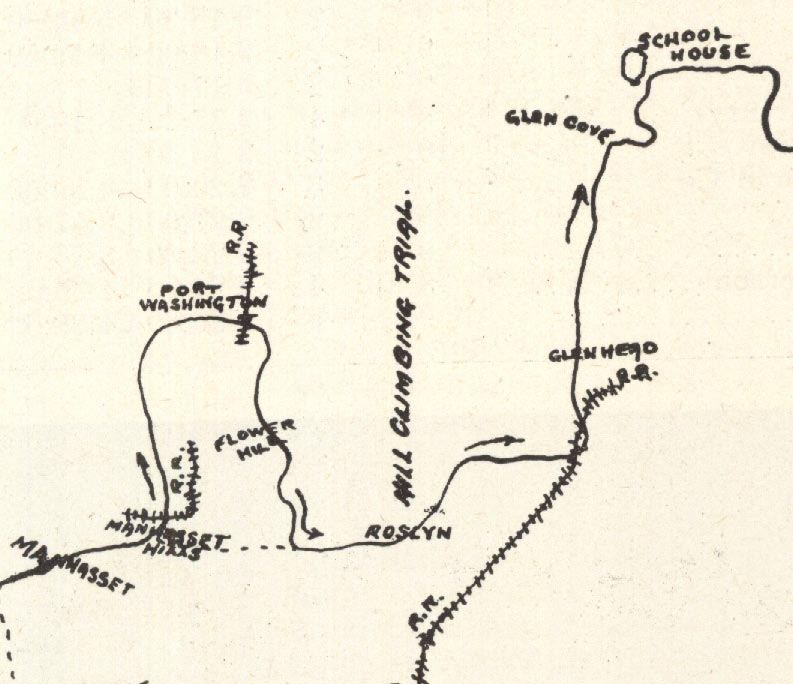
As the contestants exited the village of Roslyn, they were confronted with the 2,880 foot long Roslyn hill. The hill climb contest starting at the right-handed turn going up the hill for the 12 cars competing in the hill climb contest.
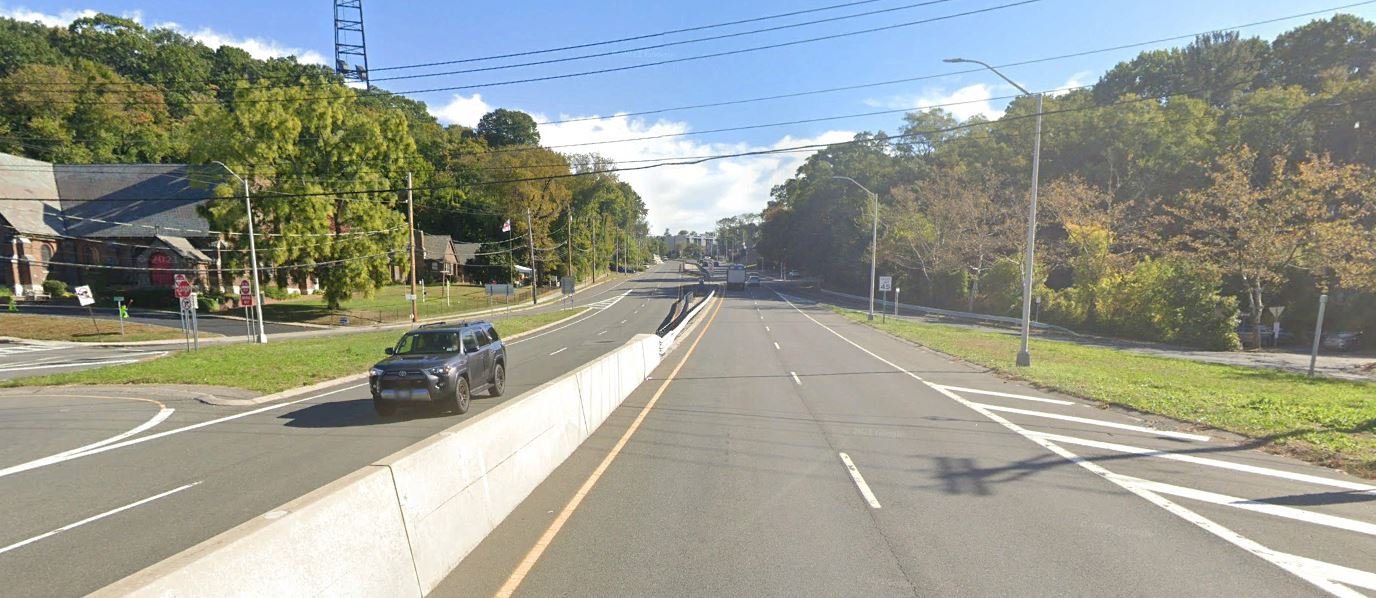
The view modern drivers see today at the location turning up the hill.
Modern images from Google Street View
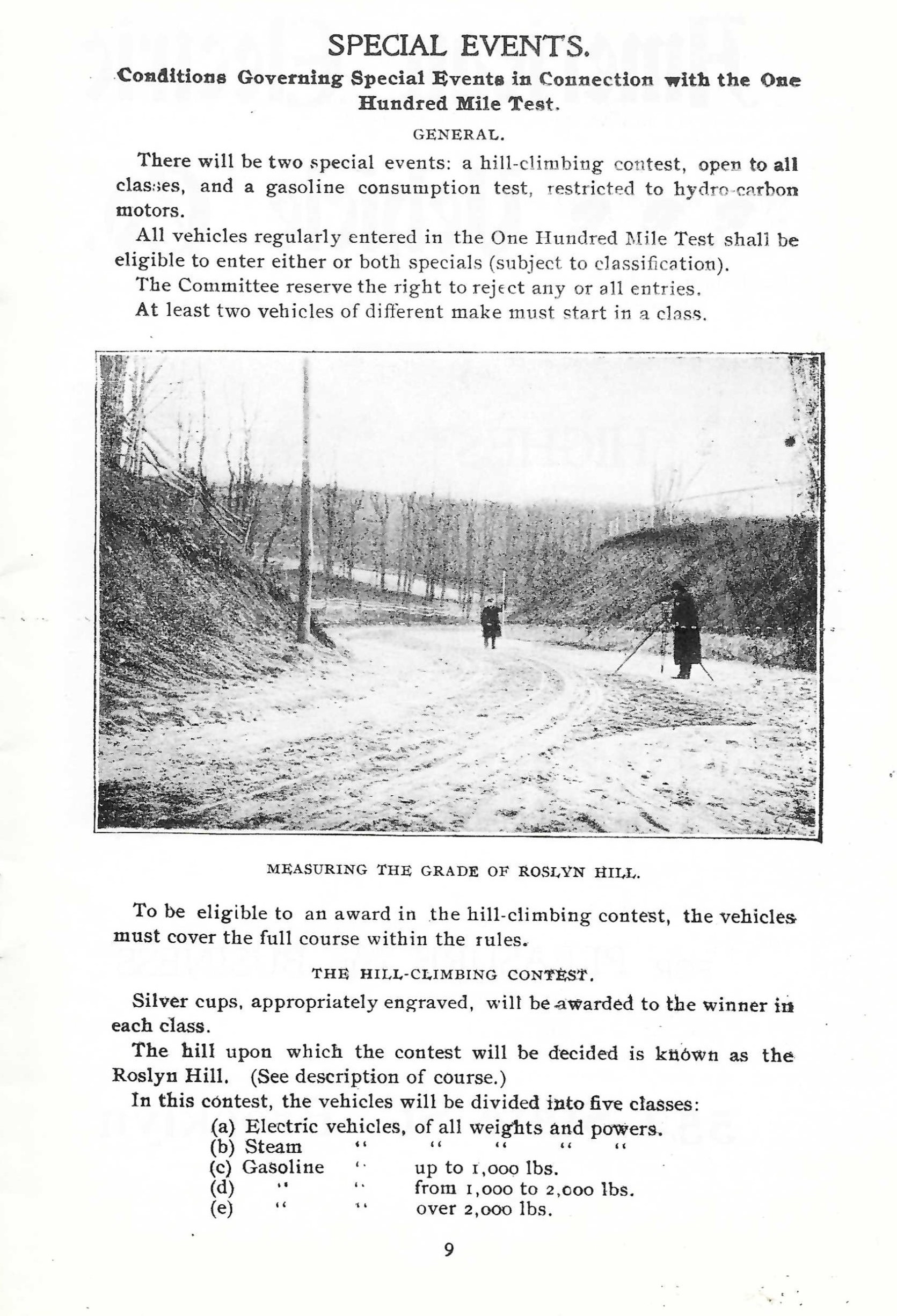
The page in the 1901 program describing the hill climb and 5 classes with a photo looking down (west) towards Roslyn.
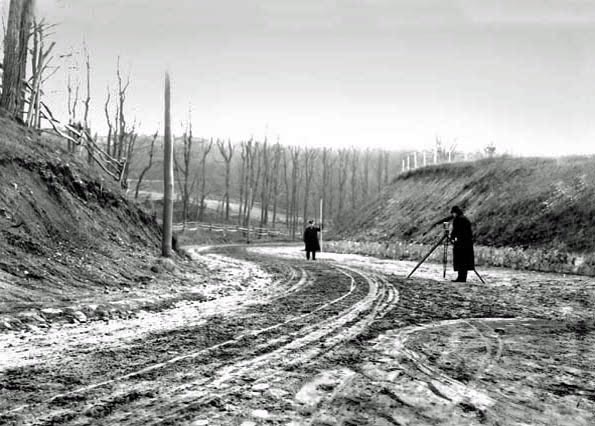
One of my all-time favorite early photos of the roads on the island. Clarence Mackay's newly built Harbor Hill estate was located to the left in the photo.
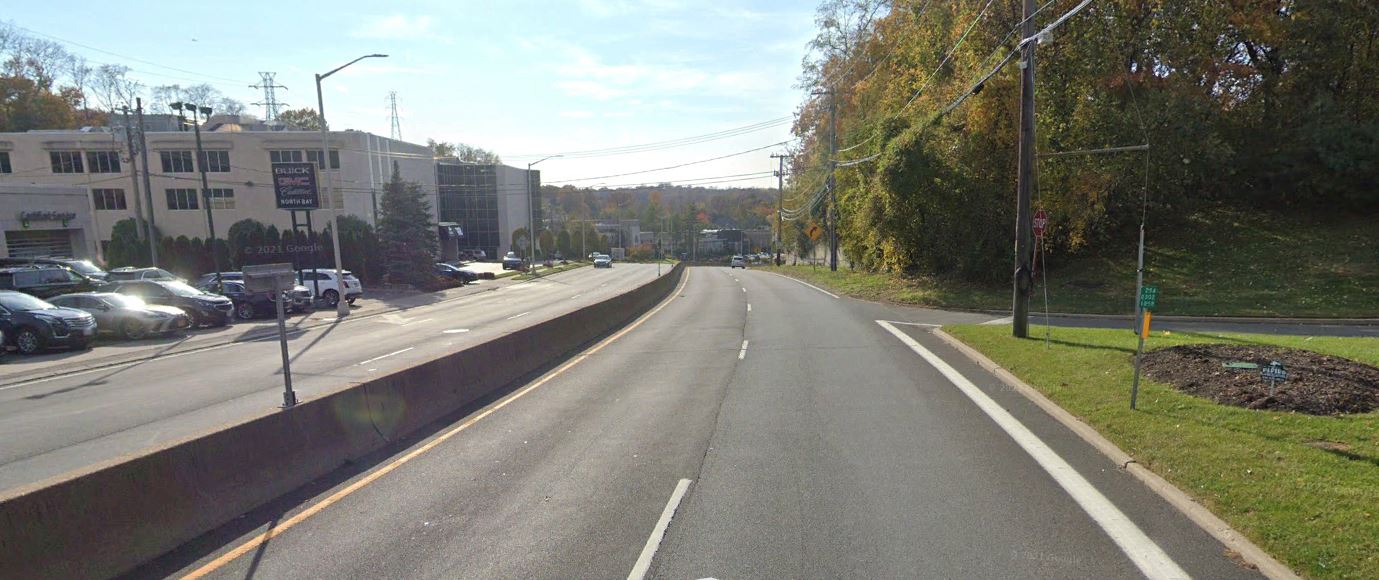
The same photographer position as seen today with North Bay GMC/Cadillac and further down, Rallye Motors on the left.
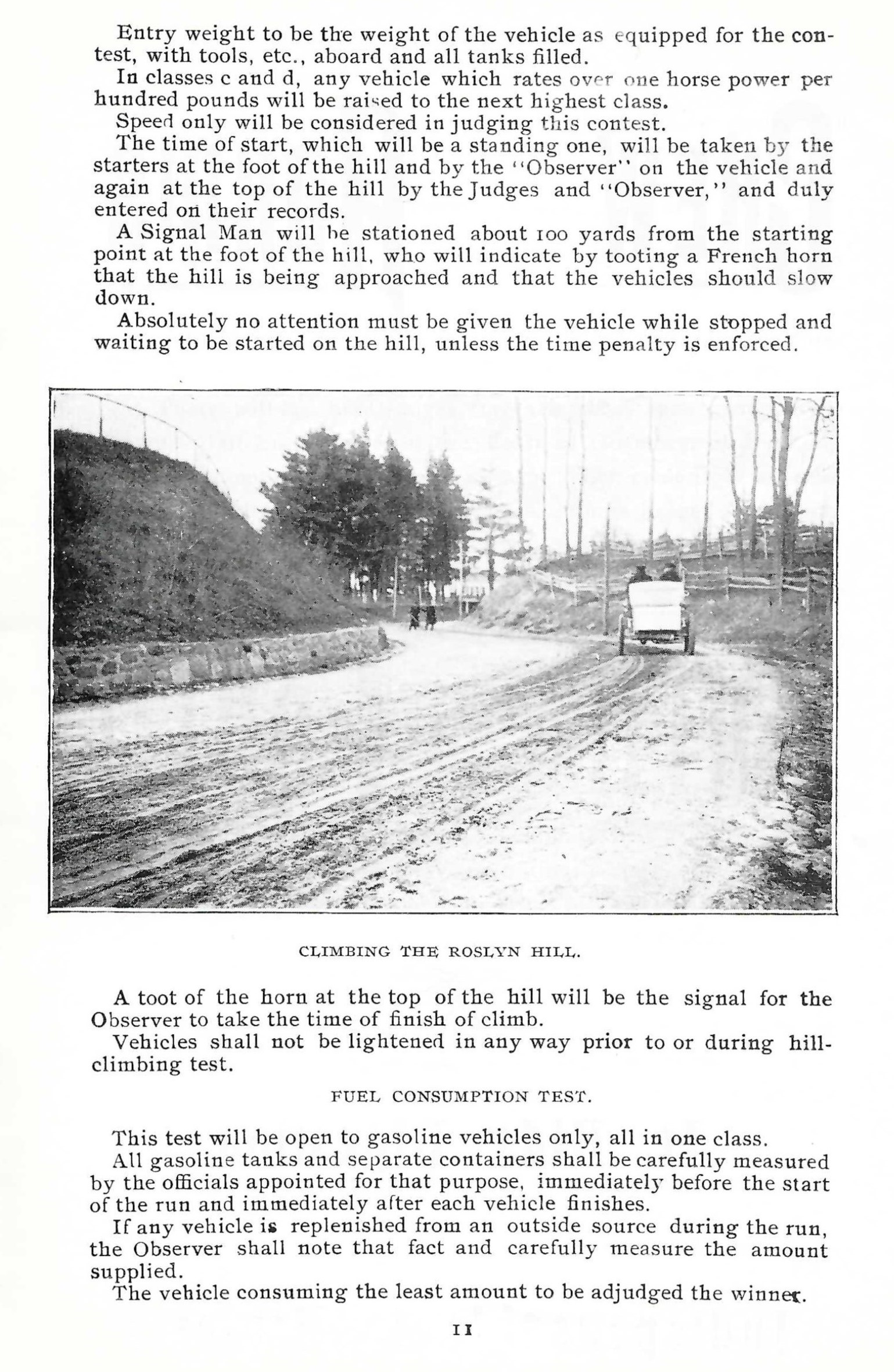
The second hill description page shows the 1901 view looking up (east) near the top.
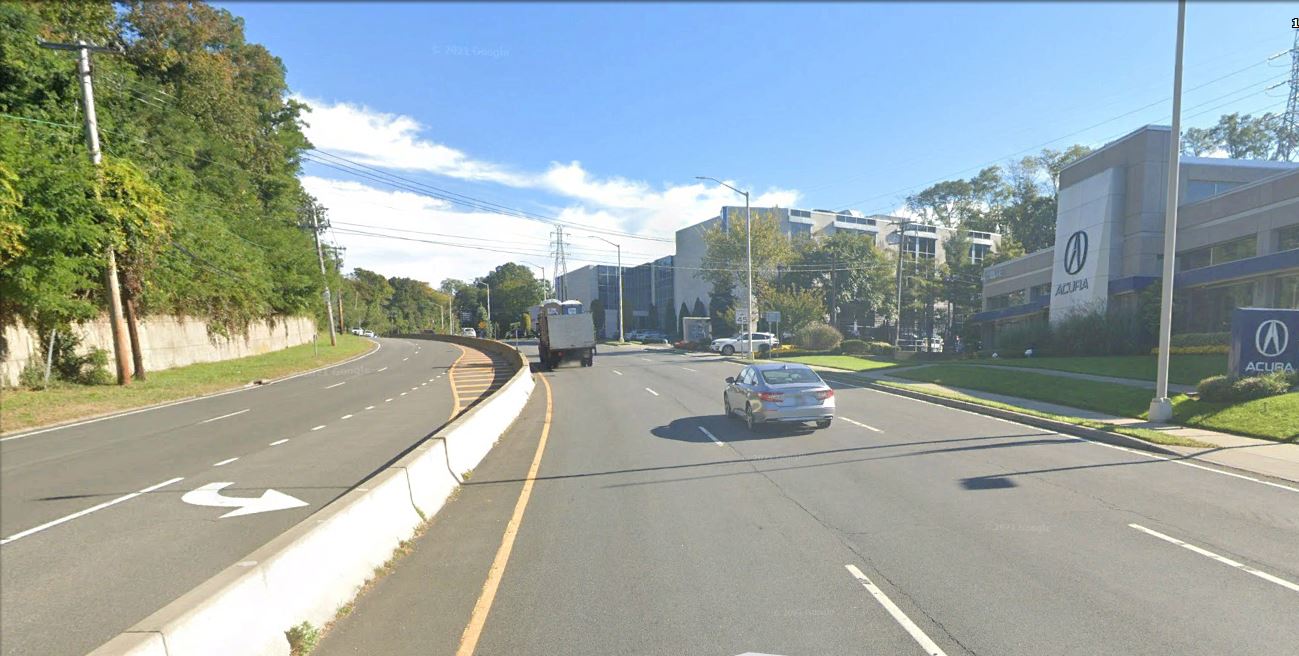
The same view drivers are presented with today. For what was one of the most demanding inclines for vehicles 123 years ago, today's automobiles have no problem rocketing up the hill.
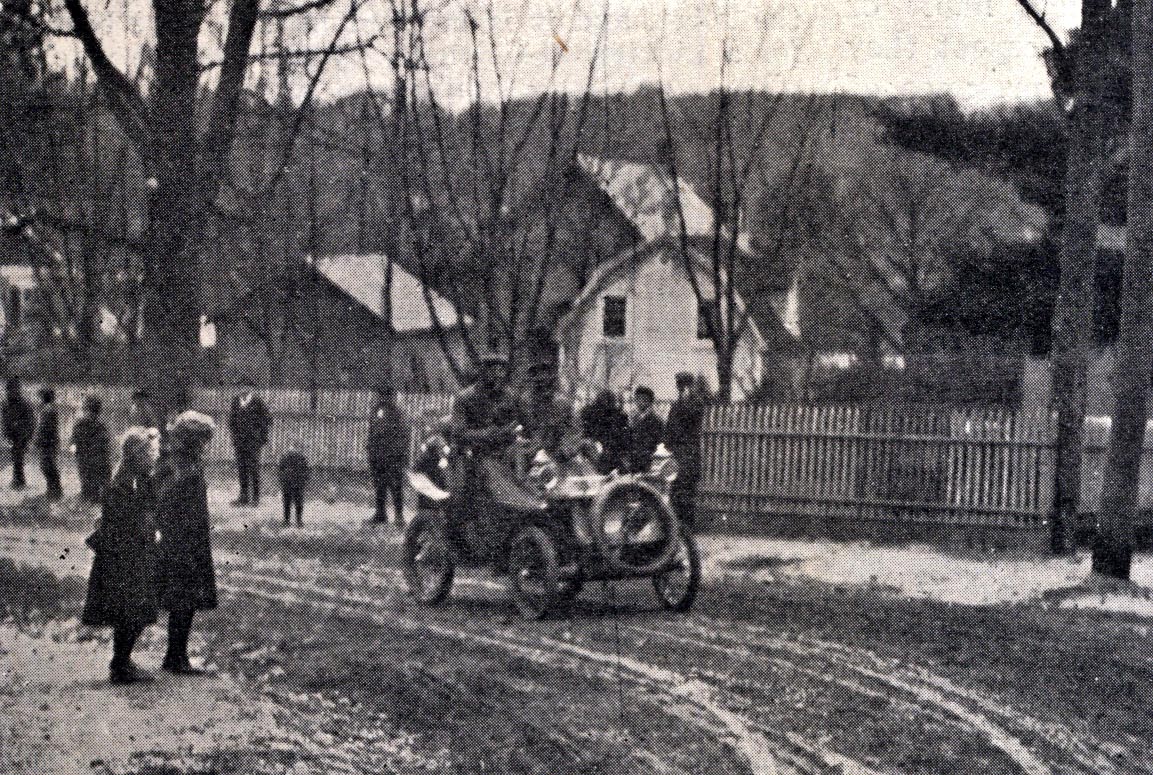
The winner of the hill climb was a Locomobile steamer, winning in 1 minute and 42 seconds, owned by Theo. K. Hastings.
A vehicle begins it's climb in 1901.
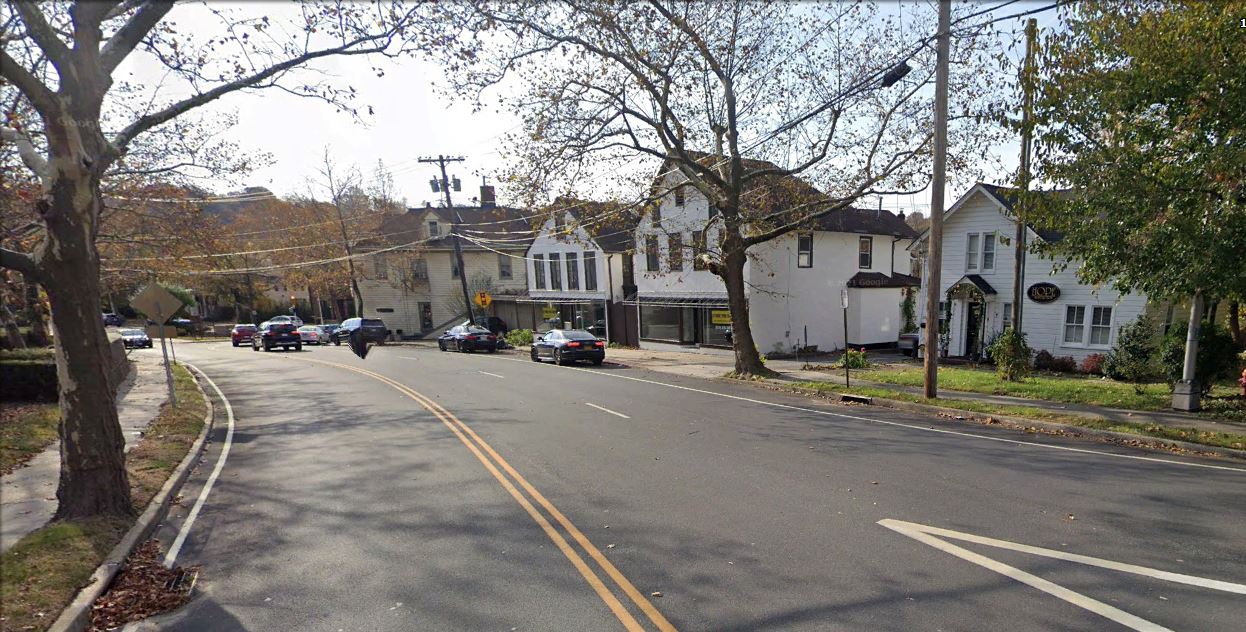
The hill climb starting point as seen today.
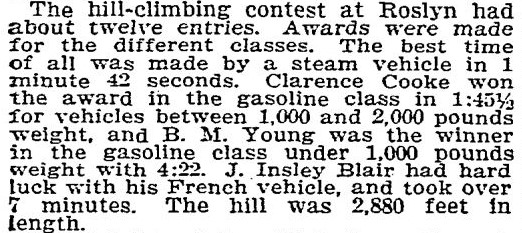
The April 27th, 1901, New York Times article with the details on the other winners in their respective classes.
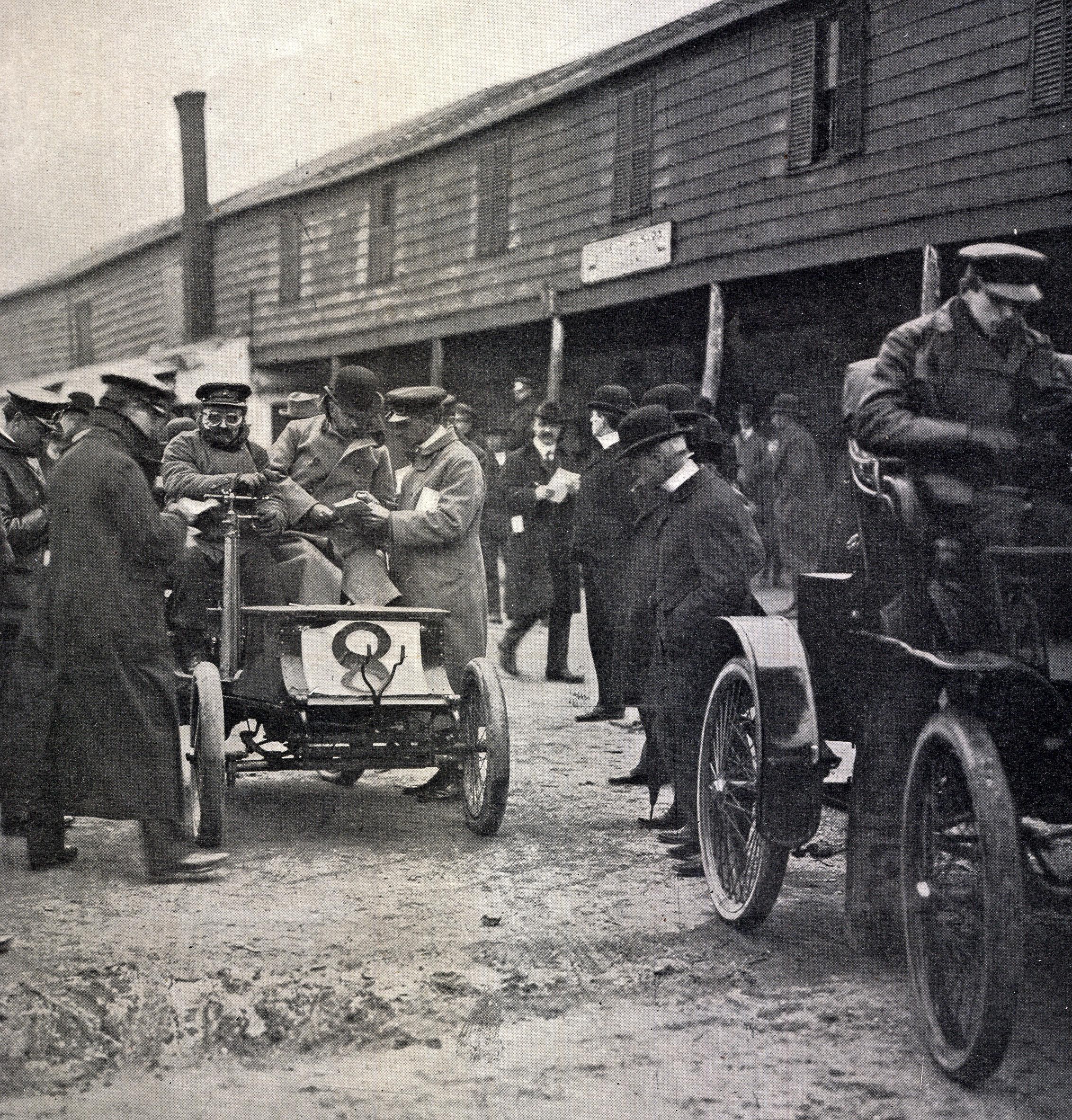
67 cars participated in the 1901 100-mile Endurance Test with a speed limit of 15 miles per hour. The winner was determined by which automobile could finish the 100-miles within a fixed time limit.
A total of 31 of the 67 cars completed the 100 miles. However, 14 cars were disqualified for exceeding the the15-mph limit. The winner among the qualifying 17 cars was a 5-horsepower gasoline car driven by J.C. Chase and Dr. W.H. Hutchinson.
The 1901 100-mile Endurance test was a success. So much so, it was followed up with another 100-mile test in 1902.

Comments
Although I’m constantly on some of the route I love seeing it anew based on this historic hill climb. Great then and now documentation.
Nice post Greg - thanks for sharing the then and now pics!
My great grandfather was the photographer for the mackay family. Also took pictures of the race.
John Pickering - Guess your great grandfather is William Pickering. If you use the SEARCH ( top of the page, right corner ) you’ll see there’s quite a bit of information about him on the site here.
Back in Oct. 28 2017, an article simular to this of the 1902 100 Mile Endurance Test.
Most likely by Art Kliner with help from Frank Femenias. On Oct. 29 I had mentioned that the driver look possible to be Louise Chevrolet driving (chauffeur) for the offical of the event viewing the course. I also mentioned I think the car is a Mors? Howard thank me for Identifying Louise Chevrolet.
John Pickering-
Here’s a link to all your great grandfather’s work.
https://www.vanderbiltcupraces.com/blog/tag/william+pickering
Great article, I have been compiling a time line of the Port Jefferson Hillclimbs. Still finding stuff. As it stands to date
Very interesting article. It brings up something I’ve been thinking about but I guess I’m too lazy to really get into: who operated the “North Hempstead Turnpike”? I know in one of these Vanderbilt newsletters we were cautioned not to think that the old toll house in the cemetery still standing in Greenvale has anything to do with the Long Island Motor Parkway. The fact that this rather rickety looking structure is still standing (especially without any special historical society protections) would seem to indicate that tolls were being collected fairly recently (let’s say less than 150 years ago). At some point did the state take over the road and put a number on it (25A)? And was Jericho Turnpike a private toll road, too?
In today’s article it’s also mentioned that these pictures show what roads on Long Island used to look like. No wonder concrete paved LIMP was such a revelation. But that brings to mind that in my mis-spent youth I used to read my local Port Washington News and they’d have a weekly feature of stories from 25 or 50 years ago and a frequently brought up topic was whether or not a particular politician was “oiling the roads” sufficiently. What sort of oil were they using? Did it mostly control the dust or did it displace the water in the mud and consolidate it?
And my final, off topic comment is, was the person quoted in Newsday about the recent special election (named Howard Krop_____, 74 years old) actually our friend Howard Kroplick, but with his name misspelled?
For Bob Allen Sometime prior to 1850 a charter was issued by NY State to the Flushing North Hempstead Turnpike Company to construct a Plank Toll Road from Flushing to today’s Glen Cove Rd. When North Hempstead Town acquired the section within the Town the tolls were eliminated. My guess is that it was at that time the toll house was moved into the cemetery.
Greg, You have to back and take another east bound photo that shows the LIRR going over North Hempstead Turnpike to get a true picture of the grade the automobiles at one time had to climb. Originally when the Oyster Bay Line opened in 1865 the tracks over the roadway were at grade. Also, today as one leaves the Viaduct heading east note the difference in the grade of the roadway compared to the buildings on both side of the Turnpike. Your first photo shows how much soil was removed to lower the grade. Just remembered, lore has it that the early Fords could only make the grade in reverse.
Al, thanks for the extra info! Would love to see a 1901 photo of the RR grade crossing then.
In regard to your answer on the toll gate, I believe the toll gate was not moved into the cemetery. Rather, Northern Blvd was realigned a few hundred feet to the south and the toll gate stayed in its original spot. The Roslyn Landmark Society seems to feel that’s what saved the toll gate from demolition.
https://www.roslynlandmarks.org/profiles/east-gate-toll-house-roslyn-cemetary
Bob,
Yes, I was quoted in the New York Times!
Howard Kroplick (AKA Howard Kroplink)
Hey guys, our Howard was a town historian for North Hempstead and did a book from Arcadia Publishing that did his other books of North Hempstead. You might want to check it out if has any photos of the area in question?